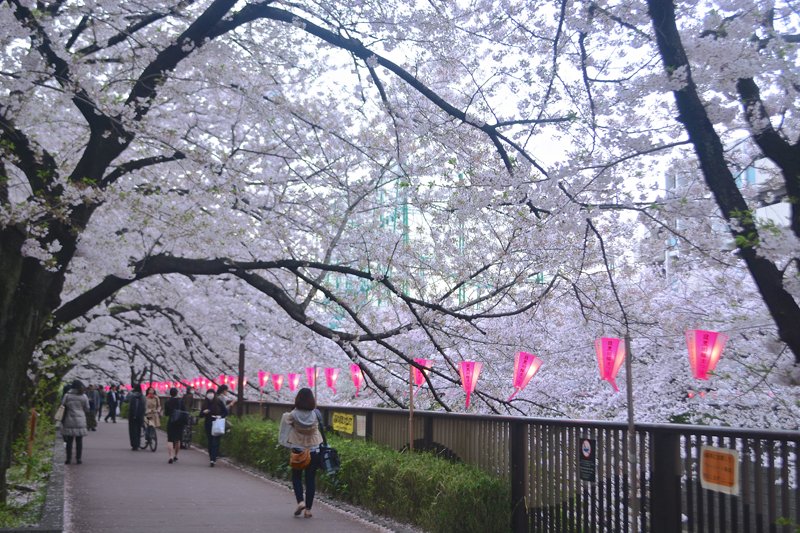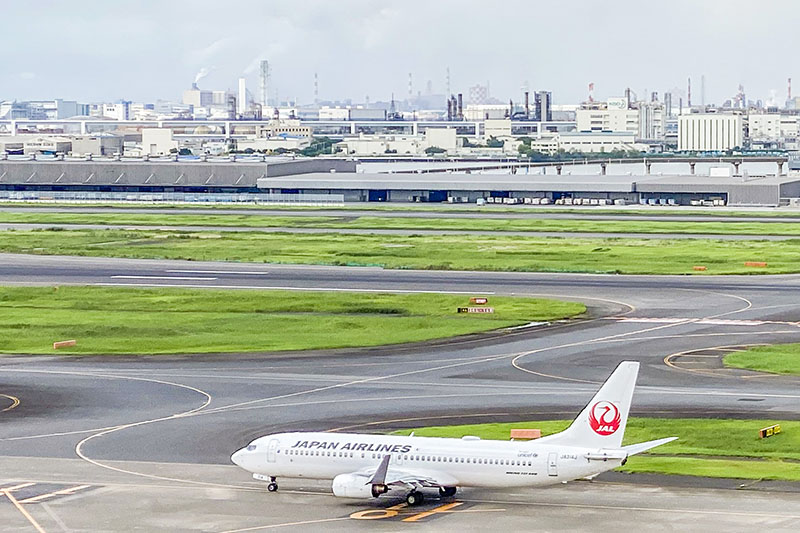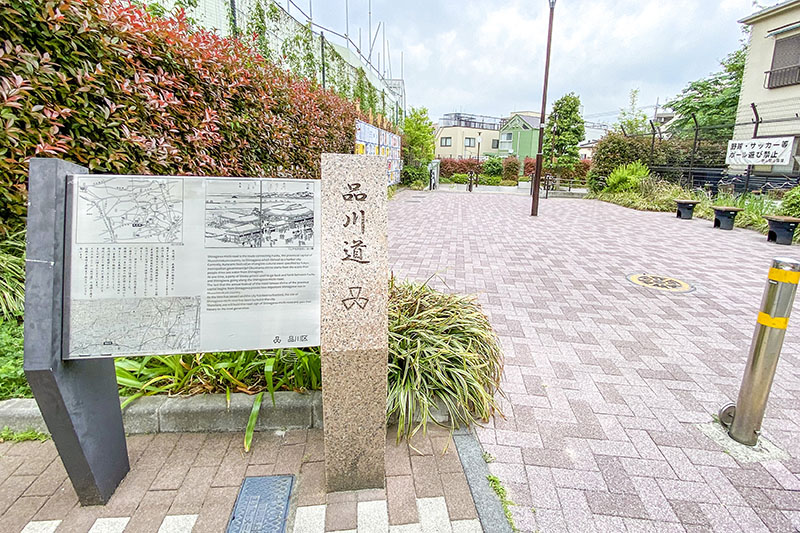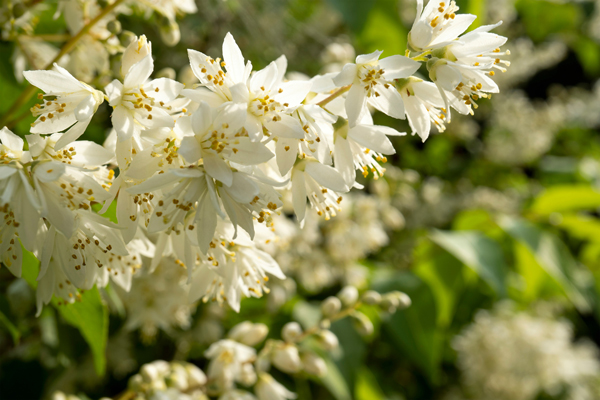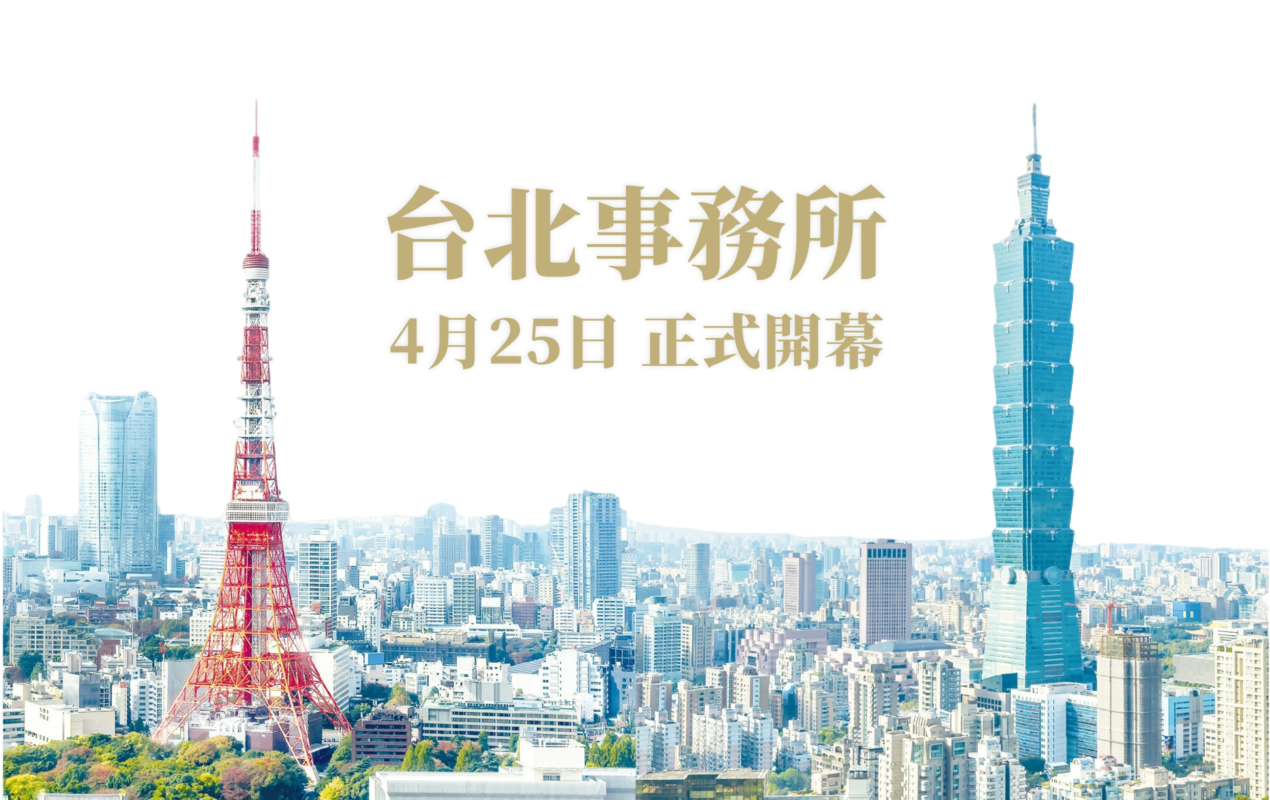Meguro is a popular residential area that often ranks high in the 'livability rankings' of Tokyo and the 23 wards of Tokyo published by various companies. The reason for its popularity can be said to be its liveliness and ease of living, with fashionable and popular commercial areas such as Jiyugaoka and Nakameguro, and quiet residential areas such as Himonya, Kakinokizaka, Jiyugaoka, Yutenji and Senzoku. The Meguro River is famous for its cherry blossoms, and the area is also known as a centre of education, as represented by the Komaba Campus of the University of Tokyo and the Ookayama Campus of the Tokyo Institute of Technology.
The current Meguro ward was created in 1932 when Meguro town and Hibusuma town in Ebara county were combined as neighbouring towns and villages were incorporated into the enlarged city of Tokyo. The present-day Meguro area is introduced here as the Meguro Area.
Cherry blossoms on Meguro River
University of Tokyo, Komaba Campus
■1 Meguro in the early modern period
The Meguro area was a farming village on the outskirts of Edo during the Edo period, with fields spreading out on the plateau. The area along the Meguro River was particularly scenic, and many villas of feudal lords were located in the area.
During the Edo period, Meguro was a familiar holiday resort for the people of Edo, known for the belief in the Meguro Fudoson and the bustle in front of its gate.
The rich natural fields on the plateau were the centre of Meguro-suji, one of the 'Edo-mawari Roku-suji Goshaka-jo', where falconry and hunting by the Shogun was popular. The Komabano (present-day Komaba area) was particularly active from the time of the 8th Shogun, Yoshimune. The Rakugo (Japanese comical tale) 'Meguro no Sanma' is said to be a story about a lord who came to Meguro for falconry. The illustration shows the 'Yeayaga Chaya', which was painted by Utagawa Hiroshige in his 'Meisho Edo hyakkei' (One hundred Famous Views of Edo) at the end of the Edo period. The teahouse was located on what is now Chaya-zaka, and is said to have been the setting for the rakugo story 'Meguro no Sanma', as the shogun also stopped by during his hawking trips. The area is also home to the Meguro SUN Festival (Meguro Ward) and the Meguro Sanma Festival (Shinagawa Ward), both of which attract large crowds of people who are treated to grilled sanma.
Meguro Fudoson
Meguro Yayagaya Teahouse (Meisho Edo hyakkei) (One hundred famous places in Edo) (National Diet Library collection)
■2 Meiji Period - Early War Period
From the Meiji period onwards, a wave of modernisation spread across the country under the leadership of the Meiji Government. Factories of both the public and private sectors began to locate along the Meguro River, which was located in the suburbs of Tokyo and could be used for boat transport, and the area developed as an industrial area. Between 1923 and 1937, the Meguro River was repaired in a straight line for flood control and to allow boats to operate as a canal.
Meanwhile, the former sites of Edo period residences were transformed into villas and residences for aristocrats and bureaucrats in the Meiji period (1868-1912), and became the foundation of today's high-class residential areas.
In 1907, the Meguro Racecourse was opened, which became a popular leisure activity, but in 1933, the Tokyo Racecourse was completed in the present-day city of Fuchu, and the racecourse was relocated and discontinued. Today, the name remains in the 'Meguro Memorial' race held at the Tokyo Racecourse. The site is now a residential area, but part of the road still retains the curved shape of the track from the racecourse days. There is also a bus stop on Meguro-dori named 'Moto-keiba-mae' and a statue of a horse named Towlunu Sol, which reminds us of the history of the racetrack at that time.
'Scenery of Meguro Racecourse during the Tokyo Racing Club era'
'Meguro Racecourse' in the early Showa period.
■3 Development as Residential Areas
After the Great Kanto Earthquake, the Musashino Plateau became increasingly residential. In the Meguro area, arable land clearance and land readjustment, as well as subdivision by housing companies to develop residential areas, were actively carried out.
In 1922, the Denentoshi Corporation, known for its Denenchofu and Hiyoshi developments, began selling its first lots in the Senzoku Denentoshi area. This was one year earlier than Denenchofu. Incidentally, Senzoku is also known as the birthplace of Empress Masako.
The name "Jiyugaoka" comes from the establishment of a school to practise liberal education. The name was later adopted as the official name of the station and place, in accordance with the wishes of the residents. Since the pre-war period, many cultural figures have lived in the area, and as a railway transfer station, it has also become a busy commercial area and developed into a popular town.
From the Taisho period onwards, especially after the Great Kanto Earthquake, Tokyo's suburbs became increasingly urbanised, and in 1932 the city of Tokyo expanded from 15 to 35 wards. At this time, Meguro ward was created as one of the 20 newly established wards.
Streetscape of Senzoku
Streetscape of Jiyugao
■4 Meguro Ward: Present and Future Plans
Following the history described above, the district is currently developing further as a residential area. Currently, popular residential areas include Yutenji, Himonya, Kakinokizaka, Yakumo, Jiyugaoka and Senzoku, while popular shopping towns include Jiyugaoka and Nakameguro.
Popular residential areas, especially along the Tokyu Toyoko Line, are located in close proximity to each other. Yutenji, located to the west of Nakameguro Station, owes its name to the historic temple Yutenji. Kakinokizaka and Yakumo are known as quiet residential areas stretching to the north of Toritsu Daigaku Station.
There are several ongoing projects in Meguro ward.
In front of Jiyugaoka Station, the Jiyugaoka 1-Chome 29 District Redevelopment Project is underway and is scheduled for completion in 2026. A 14-storey building with three basement levels will be constructed, with commercial facilities in the lower levels. In addition, a pedestrian walkway and plaza will be constructed, which is expected to make the area in front of the station even livelier.
The construction of Auxiliary Route 26 (Meguro Chuo-machi) near Gakugei Daigaku Station is also underway, scheduled for completion in 2026. When completed, Meguro-dori and Komazawa-dori will be connected by a widened road, facilitating the use of cars and increasing pedestrian safety.
Other plans for the future, such as the construction of public facilities, are also underway, and expectations for the development of the district are growing ever higher.
Image perspective of the completed Jiyugaoka 1-29 Area Redevelopment Project (cited from the Meguro Ward website)
Location map of the Jiyugaoka 1-chome 29 Area Redevelopment Project (cited from the Meguro Ward website)
■5 Minicolumn: 'Former Maeda Family's Main Residence'.
The Former Maeda Family Residence is located in Komaba Park in Meguro Ward. The reason for its location near the University of Tokyo Komaba Campus can be traced back to the history of Hongo during the Edo period.
Since the Edo period, the Maeda family of the Kaga Clan had a vast estate in Hongo. In the Meiji era (1868-1912), a large part of the estate was expropriated by the new government and used as a site for the 'Ministry of Education', which later established the former 'University of Tokyo' (later 'Tokyo Imperial University'). The Maeda family, now a noble family, continued to live in a reduced size, but in a house adjacent to the university in Hongo.
In 1926, in order to expand the Hongo campus of the 'Tokyo Imperial University', it was decided to exchange the Maeda family's land in Hongo for the Faculty of Agriculture training grounds in Komaba. The Maeda family built a luxurious mansion on the 10,000 tsubo (9,860 square metres) of land in Komaba that they had obtained through the exchange. The Western-style house, with three floors above ground and one below, and the two-storey Japanese-style house, connected by a corridor, were considered to be the largest mansions in the East at the time.
The Western-style building reflects the wishes of the 16th head of the Maeda family, Maeda Toshitame, who had lived in Europe for many years, and is decorated in a stately English-style design. The Japanese wing is a modern Japanese-style building built to convey Japanese culture to foreign guests.
The building is currently open to the public as the 'Former Maeda Family Residence'.
Former Maeda family main residence, Western-style.
Interior of the Western-style house of the former Maeda family


